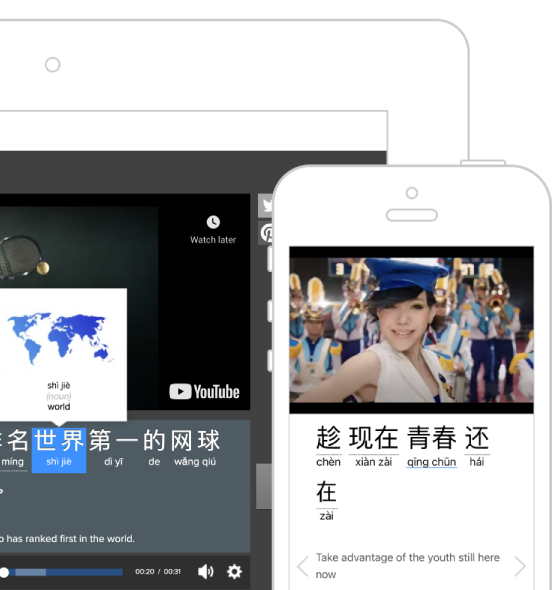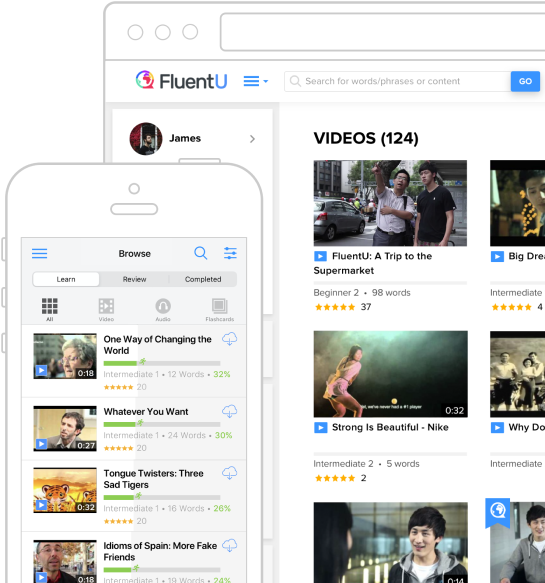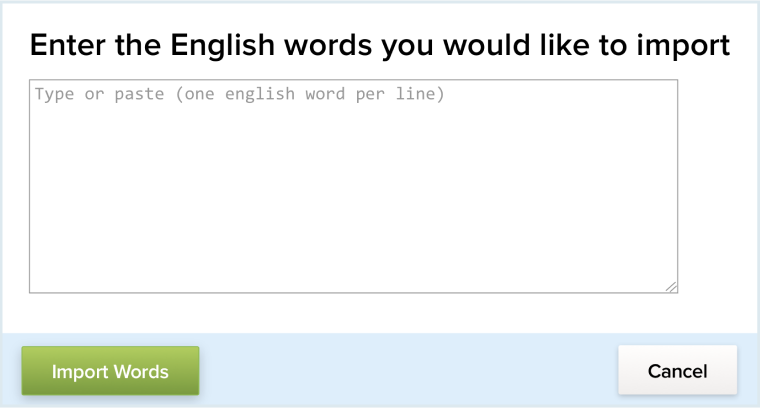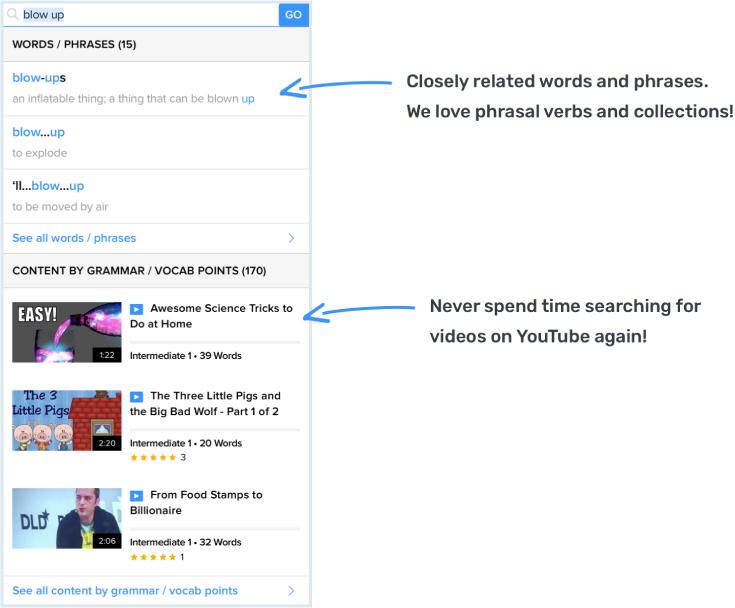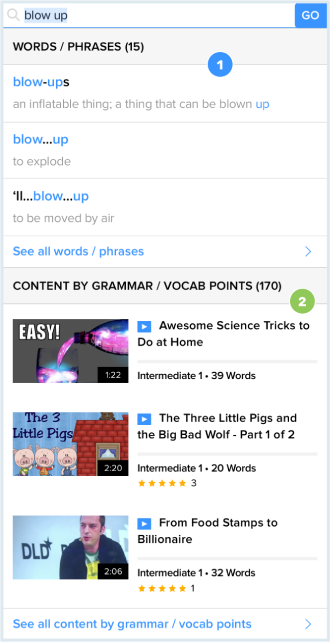Spanish
English
French
Chinese
German
Japanese
Russian
Italian
Korean
Portuguese














FluentU’s video player supports your students so they can learn on their own.
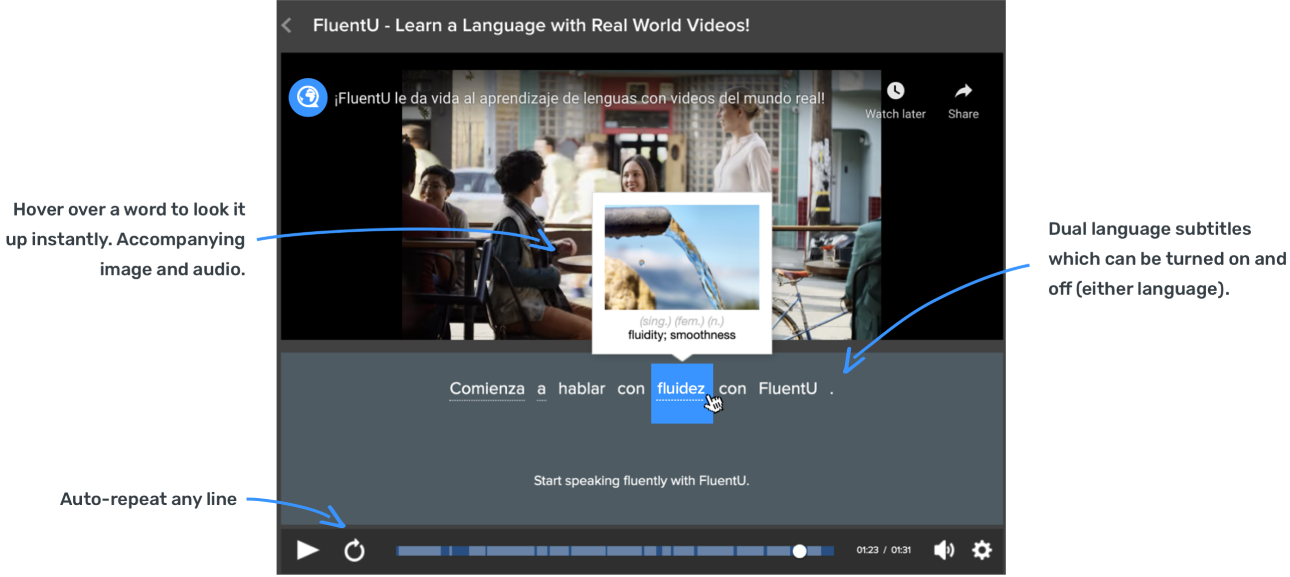
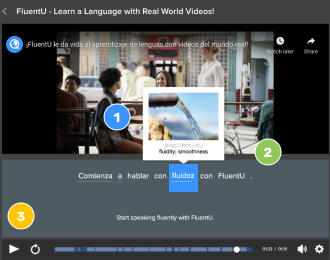
- Hover over a word to look it up instantly. Accompanying image and audio.
- Dual language subtitles which can be turned on and off (either language).
- Auto-repeat any line
Your students will never get stuck.
They can click on any word to see in-context definitions, examples, tips, and video examples.
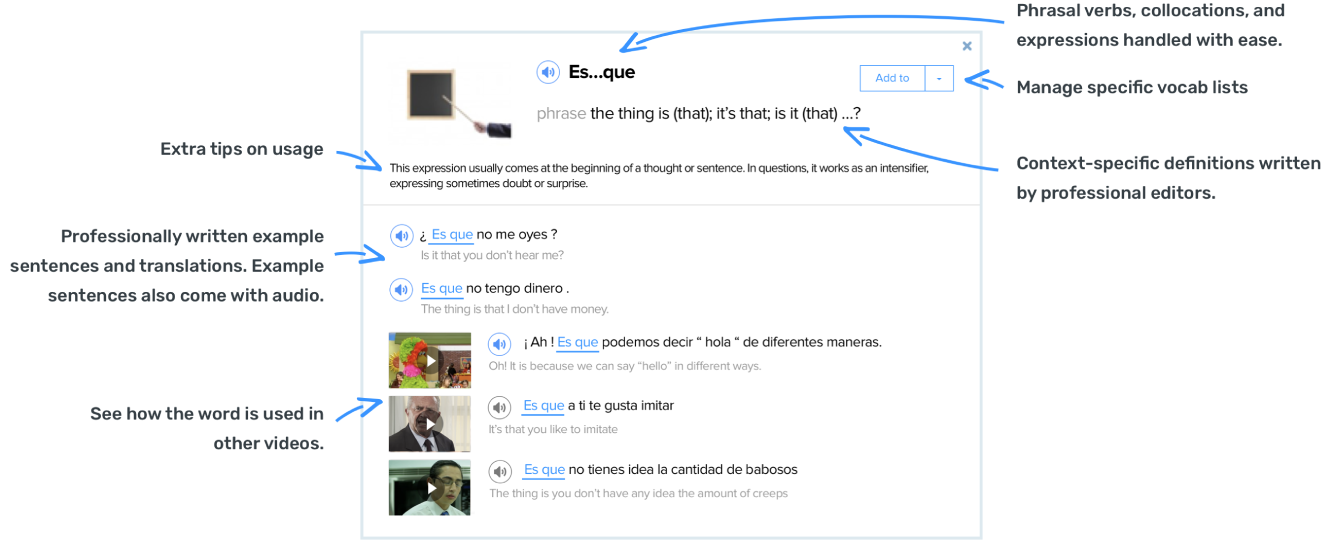
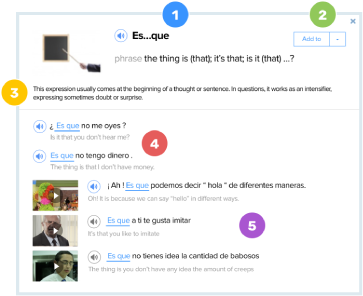
- Phrasal verbs, collocations, and expressions handled with ease.
- Manage specific vocab lists
- Extra tips on usage
- Professionally written example sentences and translations. Example sentences also come with audio.
- See how the word is used in other videos.
When I came across FluentU, I could not have been happier. I had been searching for an
educational site that allowed all of my classes, at different levels, to experience Mandarin in
the modern form, not from an out of date conversation in a textbook. This site allows you to
filter the content based on your students level, and provides a way for you to track their
progress. We watch the t.v. commercials, listen to Chinese songs, and work with the flash cards.
It's making Mandarin fun and easy to learn!
10 languages and 10,000+ videos that your students will love. More added weekly.
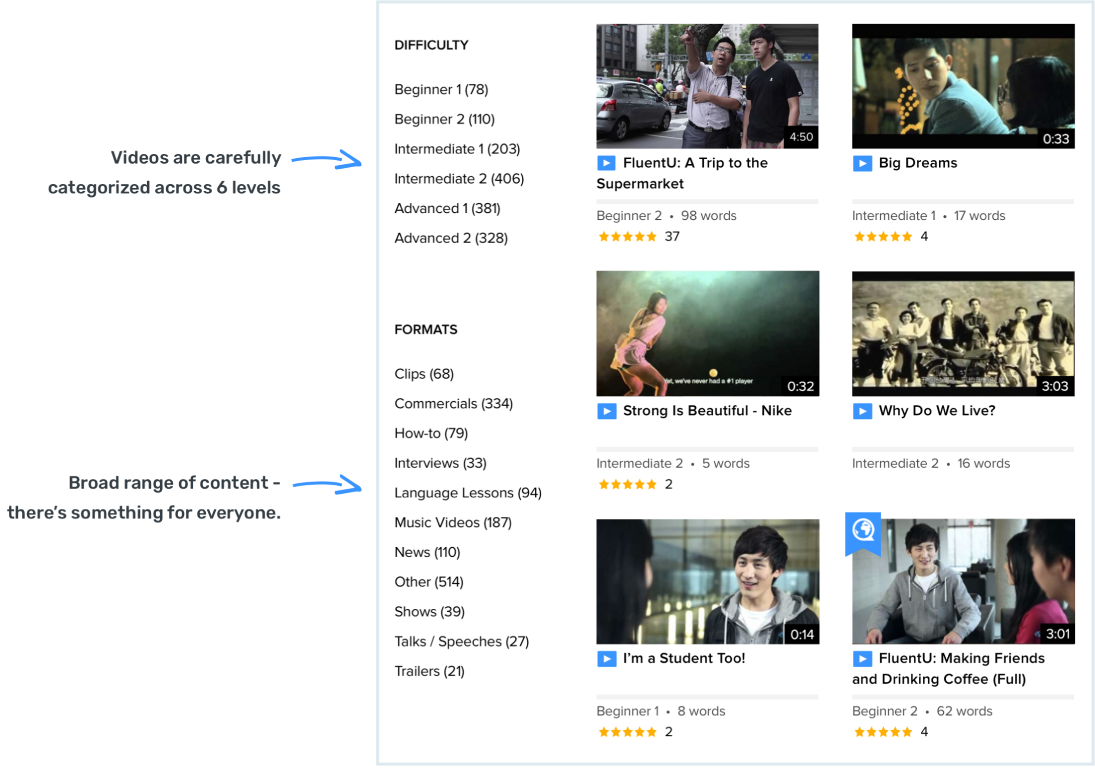
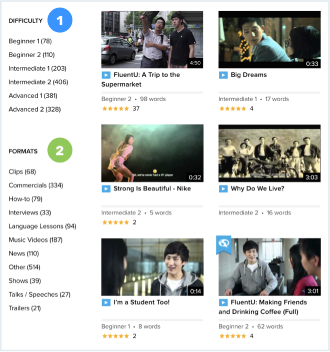
- Videos are carefully categorized across 6 levels
- Broad range of content - there’s something for everyone.
Personalized video quizzes ensure that students are able to learn the videos on their own.
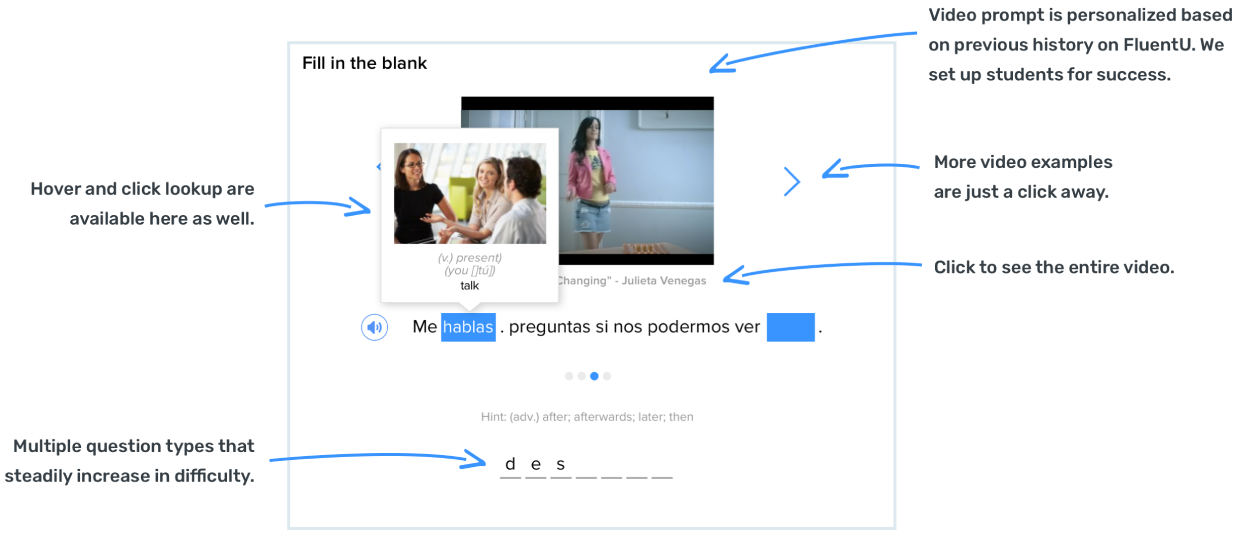
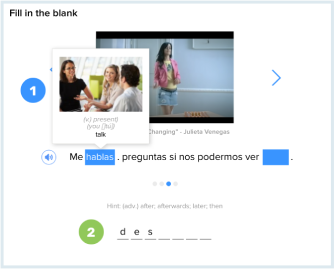
- Hover and click lookup are available here as well.
- Multiple question types that steadily increase in difficulty.
Overall, I believe FluentU is superior in its ability to teach students to learn vocabulary
in context, and in real-life situations. It makes me feel impressed with students who learn
new words, as evidenced by using them correctly, in new self-generated contexts. These are
the best moments for us language educators, and FluentU can catalyze them!
In this sense, I opine that FluentU surpasses ALL other learning, especially traditional
classroom, textbook, and powerpoint slide learning. Clearly, it has proved to be very useful
to students and teachers and surely will continue to grow in popularity!
Assign videos for homework and track student progress.
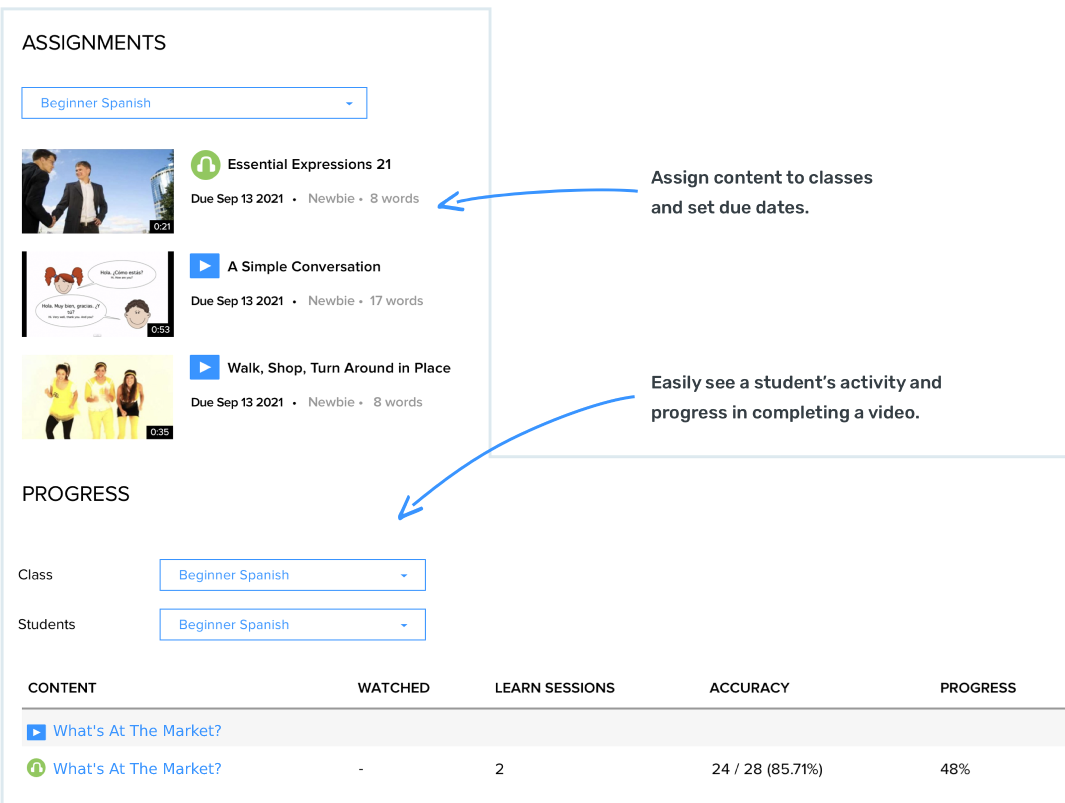
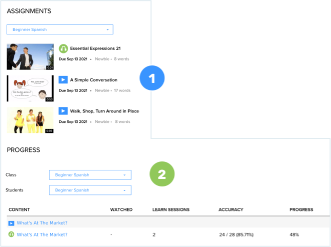
- Assign content to classes and set due dates.
- Easily see a student’s activity and progress in completing a video.
Your students can access FluentU through our website or iOS/Android mobile apps.
FluentU is great for all levels of learners - beginners or advanced, middle school or university.
Many schools use and benefit from FluentU, such as:

KENNEDALE INDEPENDENT SCHOOL DISTRICT
(Texas, USA)

KITTATINNY REGIONAL HIGH SCHOOL
(New Jersey, USA)

NOVA SOUTHEASTERN UNIVERSITY
(Florida, USA)

RIVERHEAD CHARTER SCHOOL
(New York, USA)

EPHRATA SCHOOL DISTRICT
(Washington, USA)

MEDFORD PUBLIC SCHOOL
(Massachusetts, USA)

URBANPROMISE ACADEMY
(New Jersey, USA)

UNIVERSITY OF GRONINGEN
(Groningen, Netherlands)

ISTITUTO MARIA AUSILIATRICE
(Turin, Italy)

KAOHSIUNG AMERICAN SCHOOL
(Kaohsiung, Taiwan)
Easily incorporate into your class - bulk copy/paste words to identify videos that contain the words you want your students to learn.
Give your students access to FluentU quickly and easily. Add students yourself (email not required) or ask them to signup via class code.
It's a video dictionary. Search for videos that contain the words, phrases, topics that you want to cover in class.
Other FluentU features
Can I import vocab lists to identify videos that contain the words that I want my students to
learn?
YES
Do videos come with downloadable PDF transcripts?
YES
Is it possible to see multiple video examples of how a word is used?
YES
Does FluentU use spaced repetition to help students remember?
YES
Can we create different language classes for the group?
YES

